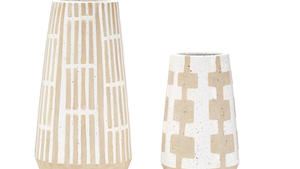“What’s it made of?” That’s what industry organizations including the Sustainable Furnishings Council, the American Sustainable Business Council, the Center for Environmental Health, the Healthy Materials Lab at Parsons School of Design, and GCI General Contractors are asking. The organizations have teamed up on the “What’s It Made Of” Initiative, which encourages members of the industry to sign an online pledge that they will ask their suppliers to fully disclose information on production outputs, keeping the company’s practices transparent.

The pledge, currently signed by 300 so far, can be found on the SFC site. It reads:
As a business leader, I am concerned about the health of our world—my employees, customers, communities, and the global environment. I am committed to reducing the use of chemicals that pose harm to human health and the environment. As a first step, I commit to ask my suppliers about the presence of chemicals of concern like flame retardants, fluorinated stain treatments, antimicrobials, vinyl and VOCs, including formaldehyde, that may be present in the products that we produce/specify/purchase.
Among the common harmful chemicals used in home furnishings are volatile organic compounds (VOCs), including formaldehyde, which is a known carcinogen, used in adhesives, finishes, paint, coatings, and many other products; and flame-retardant chemicals, which have been found not to improve fire safety but instead impact human health, including endocrine disruption and reproductive, neurologic, and immune impairment, as well as being linked to cancer. Other chemicals include fluorinated stain treatments, common in upholstered furniture and carpeting; polyvinyl chloride, known as PVC or vinyl; and antimicrobials.
“More and more, consumers and businesses want to know what is in products. The big concern is: Are they safe? Our polling found that 82% of businesses agree that businesses should be required to share chemical ingredient information all along the supply chain,” says David Levine, CEO, American Sustainable Business Council. “Transparency is good for business, which is why we and the businesses we represent strongly support the ‘What’s It Made Of’ Initiative.”
“We’re pleased that manufacturers and other upstream businesses in the furniture supply chain are adopting a disclosure model that will equip them to answer a crucial but surprisingly difficult question: ‘What’s it made of?’” says Judy Levin, pollution prevention director, Center for Environmental Health. “Consumers usually assume that furniture and other products are made from safe materials, but unfortunately that is often not the case. This simple but forward-thinking question creates incentives not only for disclosure but also for choosing materials that keep workers and consumers safe at each point in a product’s life cycle.”
“When wellness and health are considered in the design and manufacture of furniture, then homes will be the havens that we know them to be,” says Jonsara Ruth, design director of the Healthy Materials Lab at Parsons School of Design. “As designers we consider the full experience. By asking suppliers what ingredients are in products, we are fulfilling the desires of consumers to make the best, healthiest home furnishings products. We admire SFC’s leadership in the home furnishings industry, and we are happy to be part of this initiative advocating for systemic change.”




























